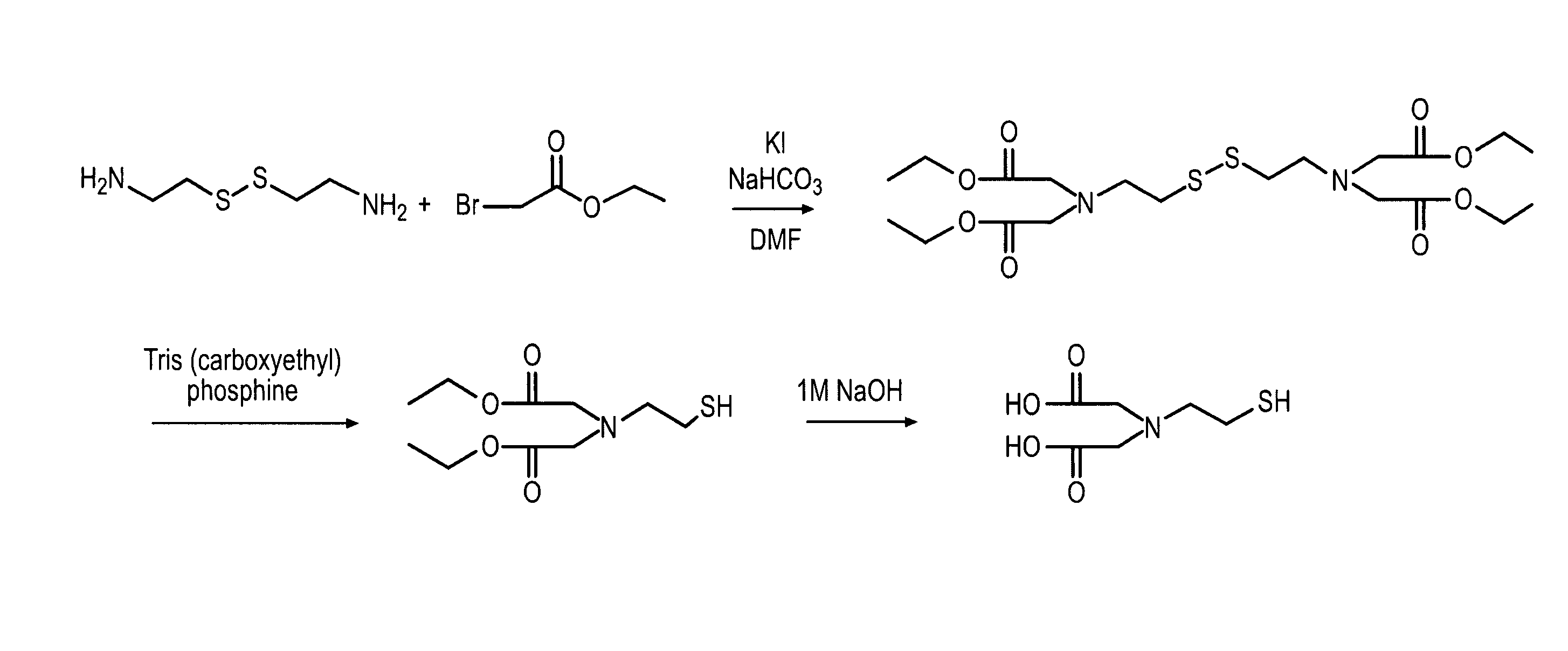Method for generating metal chelating affinity ligands
a metal chelating affinity and ligand technology, applied in the field of generating polydentate metal chelating affinity ligands, can solve the problems of insufficient product definition, less efficient alkylation chemistry, time-consuming and hence cost-intensive methods, etc., to achieve improved coupling efficiency, improved coupling efficiency, and high metal binding capacity
- Summary
- Abstract
- Description
- Claims
- Application Information
AI Technical Summary
Benefits of technology
Problems solved by technology
Method used
Image
Examples
examples
[0076]Below the present invention will be disclosed by way of examples, which are intended solely for illustrative purposes and should not be construed as limiting the present invention as defined in the appended claims. All references mentioned below or elsewhere in the present application are hereby included by reference.
1. Introduction to Experimental Studies and Results
1.1 General Analytical Methods
[0077]1H-NMR and 13C-NMR NMR spectra were recorded on a Bruker 300 MHz using TMS as reference. LC-MS data were recorded using a Hewlett Packard 1100 MSD electro spray instrument.
1.2 Preparation and Coupling of Ligand to Base Media
1.2.1 Preparation of N,N′-Bis(di ethoxycarbonylmethyl) cystamine
[0078]Cystamine dihydro chloride (homodimer) (5 mmol, 1.12 g, Sigma-Aldrich C12, 150-9) was dissolved in 100 ml of DMF and bromo acetic acid ethyl ester (30 mmol, 3.4 ml), potassium iodide (5 mmol, 0.83 g), and sodium hydrogen carbonate were added (25 mmol, 2.1 grams). The mixture was stirred ove...
PUM
| Property | Measurement | Unit |
|---|---|---|
| pH | aaaaa | aaaaa |
| concentration | aaaaa | aaaaa |
| volume | aaaaa | aaaaa |
Abstract
Description
Claims
Application Information
 Login to View More
Login to View More - R&D
- Intellectual Property
- Life Sciences
- Materials
- Tech Scout
- Unparalleled Data Quality
- Higher Quality Content
- 60% Fewer Hallucinations
Browse by: Latest US Patents, China's latest patents, Technical Efficacy Thesaurus, Application Domain, Technology Topic, Popular Technical Reports.
© 2025 PatSnap. All rights reserved.Legal|Privacy policy|Modern Slavery Act Transparency Statement|Sitemap|About US| Contact US: help@patsnap.com



